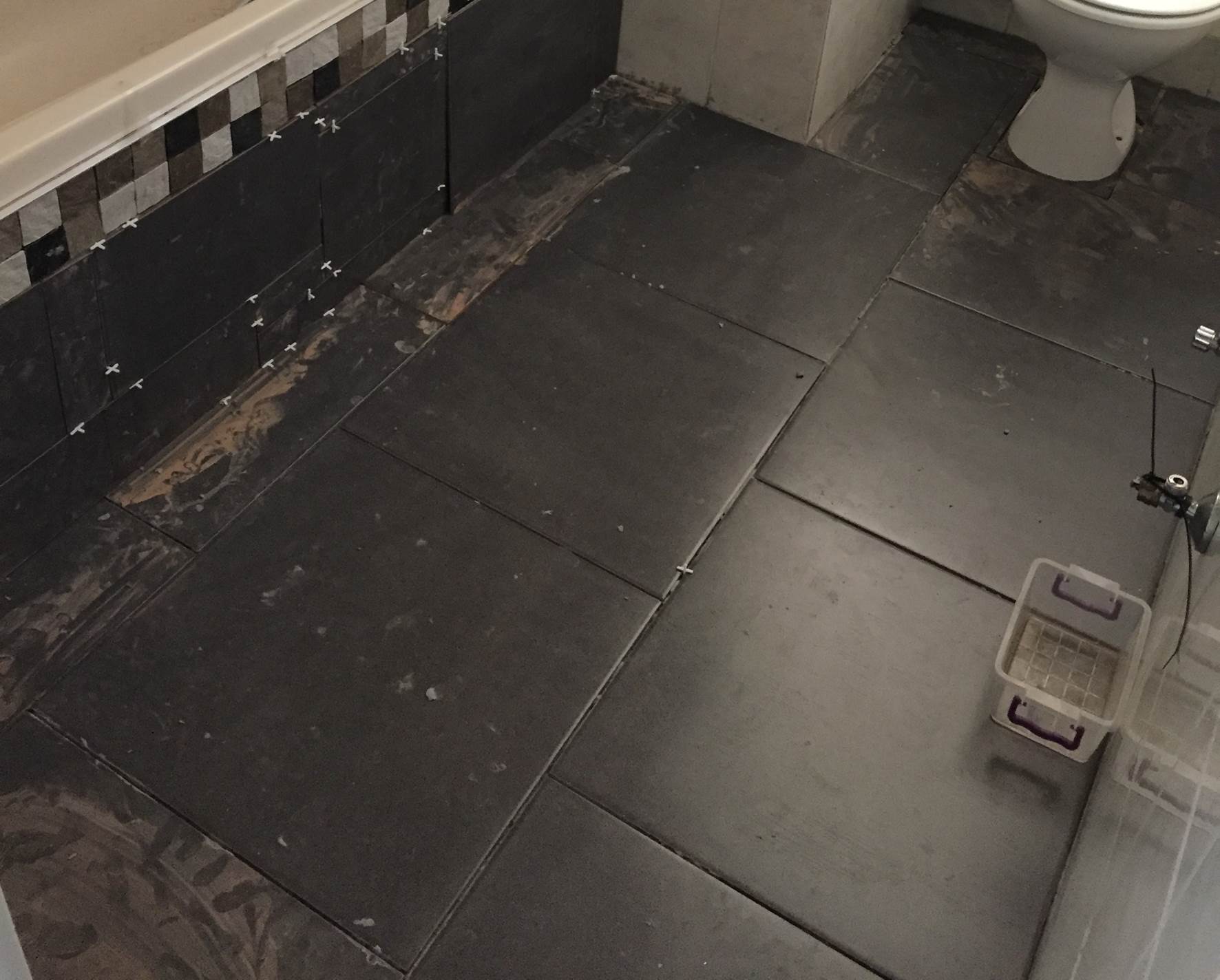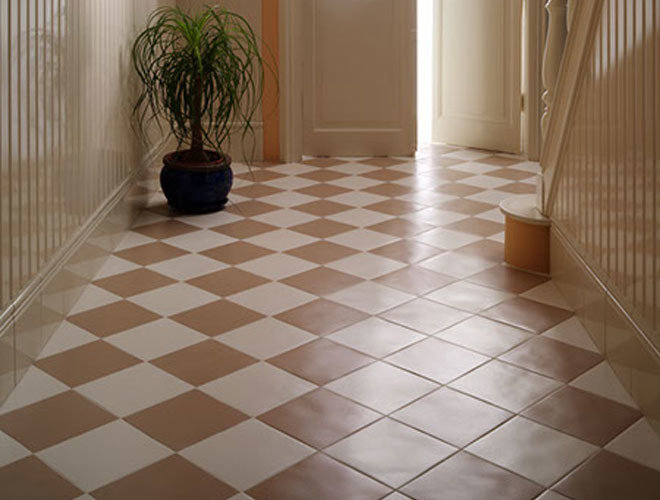Have you ever stared at your dated bathroom tile and wondered if there’s a simpler solution than ripping it all out? You might be tempted to tile over your existing tile – a seemingly quick and budget-friendly fix. But before you grab your trowel, there are some crucial considerations that can make or break your project.

Image: www.the-diy-life.com
Laying tile over tile isn’t always a walk in the park. It’s a project with its own set of challenges and potential pitfalls. This article will guide you through the complexities of tiling over existing tile, exploring the pros and cons, crucial factors to consider, and when it’s best to start fresh.
When Can You Tile Over Existing Tile?
While the idea of saving time and effort by tiling over existing tile might sound appealing, it’s not always a viable option. Here’s a breakdown of when tiling over tile could be a good idea:
1. A Solid Foundation:
- Existing Tile is Secure: The most important factor is the integrity of the existing tile. If tiles are cracked, loose, or showing signs of movement, they need to be removed for a stable base.
- Level Subfloor: A level subfloor is essential. If the existing tile hides a warped subfloor, leveling might be required before tiling.
2. Minimal Height Increase:
- Limited Space: If you’re working with tight spaces like shower stalls or doorways, the extra layer of tile might make it too cramped.
- Door Clearance: Ensure your door can still clear the threshold after adding the new tile layer.

Image: www.hayenews.com
3. Similar Tile Type:
- Similar Material: Tiling over similar material, like ceramic over ceramic, is generally safer than drastically different materials. Ceramic over porcelain might be trickier.
The Challenges of Tiling Over Tile
While tiling over tile is possible in the right conditions, there are significant challenges to consider:
1. Adhesion Issues
The new tile must adhere firmly to the existing tile, and that’s not always guaranteed. A layer of thinset mortar needs to bond to the old tile, which can be difficult due to the glazed surface.
2. Uneven Surfaces:
Even if the subfloor is level, the old tile might have grout lines, raised or uneven areas that can cause problems. This can make it hard to achieve a smooth, flat finish.
3. Increased Thickness
Adding another layer of tile increases the overall thickness of the floor. This could affect door clearance, transition to other floor types, and even impact the structural integrity of your flooring.
4. Potential for Cracking
As the new tile and thinset mortar expand and contract due to temperature fluctuations, the existing tile can become stressed. This can lead to cracks or even detachment.
When to Remove Existing Tile
While tiling over existing tile can be tempting, there are situations where it’s simply better to remove the old tile. Here are some key indicators:
1. Extensive Damage or Detachment:
If your old tile is heavily cracked, loose, or shows signs of water damage, you can’t rely on it as a stable base. This often means removal is necessary.
2. Significant Height Increase:
If you need to add a thick layer of tile to achieve the desired effect, the extra height might become a major obstacle. Removing the old tile offers a smoother and more controlled finish.
3. A Complete Style Change:
If you want a dramatic difference in style, like changing from ceramic to porcelain or stone, it’s easier to start fresh. Removal allows you to select a perfect subfloor and achieve the desired look without the constraints of the old tile.
Important Tips for Tiling Over Tile
If you decide to take the risk and tile over existing tile, follow these essential steps for a successful outcome:
1. Prepare the Existing Tile:
Clean the existing tile thoroughly using a degreaser. Make sure it’s free of dirt, grease, wax, and any residues. It’s crucial to create a clean surface for the thinset mortar to adhere to.
2. Check for Loose Tiles:
Tap on the existing tiles to ensure they’re firmly attached. If you hear a hollow sound or find loose tiles, they must be removed and the substrate repaired before proceeding.
3. Address Unevenness:
If the existing tile surface is uneven, consider using a leveling compound to smooth out any bumps or dips. This will ensure the new tile lays flat and prevents uneven wear.
4. Use a Strong Thinset Mortar:
Select a high-quality, modified thinset mortar specifically designed for tile-over-tile applications. This will provide the necessary adhesion to the existing surface.
5. Apply Thinset Correctly:
Use the back-buttering method, applying a generous layer of thinset to the back of the new tile and another thin layer on the existing tile. This ensures adequate bonding and minimizes air pockets.
6. Allow Ample Curing Time:
Follow the manufacturer’s instructions for the curing time of the thinset mortar. This is crucial for proper adhesion and strength. Avoid placing any weight or walking on the newly tiled floor during this period.
Exploring Alternatives to Tiling Over Tile
If you’re unsure about the risks involved in tiling over existing tile, or simply prefer a less complex approach, consider these alternatives:
1. Self-Leveling Compound:
If the existing tile is in good condition but the subfloor is uneven, using a self-leveling compound can smooth out the surface. This creates a more level base for new tile, eliminating the risk of adhesion issues on uneven surfaces.
2. Tile Overlay Sheet:
An innovative solution is using a tile overlay sheet. This thin sheet of material is simply applied over the existing tile, providing a smooth and level surface for your new tiles. It’s a quick and easy method to refresh your floor without removing the old tile.
3. Luxury Vinyl Plank (LVP):
LVP flooring is a popular choice because of its durability, water resistance, and ease of installation. It can be laid over existing tile, creating a new and stylish surface without the need for extensive demolition.
4. Engineered Hardwood:
Engineered hardwood flooring is another option for covering old tile. It offers a more traditional and sophisticated look and can be installed over existing tile with the right preparation and fasteners.
Can You Tile Over A Tiled Floor
Conclusion
Tiling over existing tile can be a challenging task, and it’s not suitable for every situation. Carefully assess the factors involved, including the condition of the existing tile, the required height increase, and your overall goals for the project. If you’re unsure, it’s always best to consult with a professional. Remember, taking the time to properly evaluate your options will lead to a smoother and more satisfying outcome for your flooring project.





